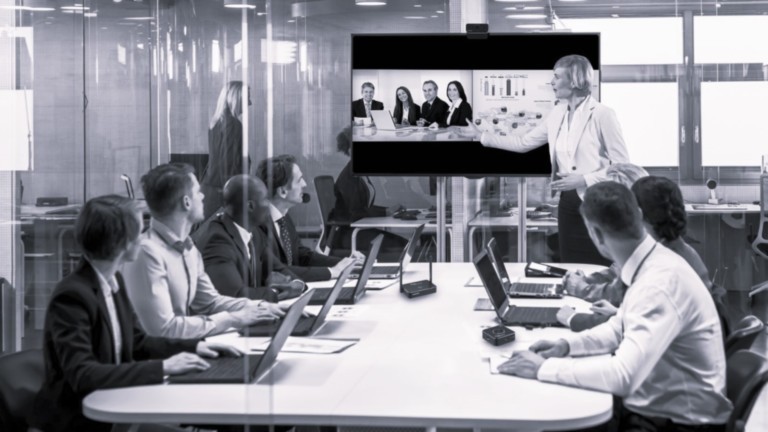The Importance of Audio and Videoconferencing in the Design of Modern Conference Rooms and Classrooms

In contemporary interior design, aesthetics often take center stage. Glass walls, polished concrete floors, and soaring open ceilings create visually stunning spaces that project innovation and modernity. However, these same design choices can introduce major challenges when it comes to audiovisual integration and remote communication.
The Acoustic Challenge in Modern Spaces
Hard surfaces like glass, concrete, and metal reflect sound waves, causing conversations to echo and microphones to capture distorted or muddled audio.
In hybrid meetings or distance learning environments, this becomes a critical problem. Remote participants rely entirely on clear audio to follow discussions and contribute effectively. A space may look impressive, but if communication is compromised, it fails its primary purpose.
Balancing Design and Technology
To prevent form from taking precedence over function, audio and videoconferencing must be considered early in the design phase. This means:
- Discreet acoustic treatments: sound-absorbing wall panels, suspended ceilings, acoustic baffles, or soft furnishings.
- Thoughtful material choices: carpets, curtains, and other soft surfaces that counterbalance hard elements.I
- ntegrated AV solutions: professional audio systems (Kramer, Xilica, Audac, Tannoy, Yamaha, Allen & Heath, Midas), smart cameras (Lumens, Huddly), dynamic displays (ViewSonic, LG, Samsung, Planar), and HDMI/USB extenders (Kramer, C2G, Hall Technologies, Icron).
These solutions enhance the user experience without compromising aesthetics and ensure spaces are productive and user-friendly.
Collaboration Is the Key to Success
Successful projects require collaboration between designers, architects, and AV specialists. By considering technology requirements from the start, organizations avoid costly retrofits and create spaces that truly meet users’ needs.
Creating Inclusive and High-Performance Spaces
Whether in a municipal council chamber, a university classroom, or a corporate meeting room, the priority is that every voice is heard clearly—both in-room and online.
Designing with both aesthetics and audiovisual performance in mind results in inclusive, productive, and future-ready environments.
At Consultants MELTINGICECUBE, we help organizations design and implement tailored audiovisual solutions for conference rooms, smart classrooms, and hybrid collaborative spaces.
